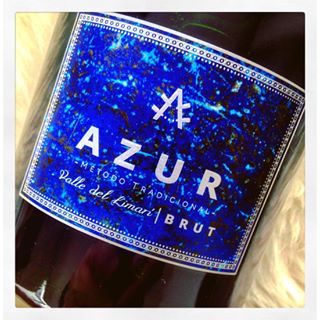Azur is Chile’s first sparkling wine house dedicated exclusively to the production of sparkling wine throughout the traditional method. Azur is the Icon sparkling wine in Chile with a unique minerality and freshness due to its origin over the Limarí Valley terroir.
Sparkling wines have their roots in the Champagne region of France. From there comes its prestige and the beginning of the myth of its bubbles. Legend has it that the producers of still wines in the Champagne region when they exported their wines to England, a long time ago, occurred to them that the English merchants returned the wines, many times, due to the low or almost null quality, along with the advice to make the wines again. The main failure, the legend continues, was very low alcohol and very high acidity. Therefore, they decided to add sugar to improve alcohol content and diminish acidity, this it is assumed, drives the invention of the traditional method (champenoise) to produce sparkling wines. Along with this they discovered that the grapes of the region were good for making sparkling wines but not good enough to make still wines.
Consequently, the history of Champagne began with chance and the power of observation of its producers. During the winters the process of fermentation of its wines was paralyzed by the predominant low temperature and only reactivated with the arrival of spring. This caused fine bubbles in the wine. The producers found ways to improve and control this secondary fermentation process. This wonderful accident was the beginning of the well-known traditional method used for the elaboration of the finest sparkling wines in the world. Legend has it that in 1670 Dom Pierre Pérignon, a Benedictine monk from the Abbey of Saint Peter of Hautvillers, was the first to practice mixing grapes from different vintages and varieties, which improved the quality of the wine. According to this legend, during a pilgrimage to the Benedictine abbey of Saint-Hilaire in Languedoc, Dom Pierre Pérignon discovered the method of making the Blanquette de Limoux, the first effervescent wine in the world, invented by the monks in 1531, and that helped him to improve his own recipe.
In Chile as in other producer’s countries, Champagne or champagne became a generic name, as well as champenoise, but recent commercial agreements protect those names as appellations of origin, therefore, today the concept of sparkling or sparkling wine is used. Also the producers have created their own denominations like Cremant (France), Cava (Spain), Sekt (Germany) or Prossecco (Italy). Sparkling wines can be produced by two methods: traditional or champenoise (protected) and charmat. The first is a craft method in which literally produces bottle by bottle.
The charmat method, on the other hand, is destined for greater volumes and was born by the high demand of this type of products at prices more reasonable than the traditional wines of Champagne. This method, created in 1907 by Jean-Eugène Charmat of the University of Montpellier, is made in tanks of 700 or more liters, completely hermetic to preserve the bubbles. In general it offers us fruity wines, fresh and young.
The production of champenoise sparkling wine is destined to more elegant wines, complex and with greater capacity of guard. First, the grapes are harvested manually. It is essential that it arrives in perfect condition to preserve all natural yeast in the skin of the grain, in order to facilitate fermentation. Then the grapes are pressed. The champagne is a white wine made with a red variety grape like Pinot Noir; therefore, the juice has very little contact with the skin to not get much colour. If a longer contact is allowed, we will obtain a sparkling rose wine.
Sparkling wine can be a mixture of grape varieties (Chardonnay, Pinot Noir and Pinot Meunier), but also from different plots and even crops (A wine of an exceptional year is called champagne millesime). If a sparkling wine is made only of the Chardonnay strain is called Blanc de Blanc and is characterized by a very delicate flavor. And if a wine is made from a red variety strain is called Blanc de Noir and is recognized by a good texture and body, in addition to rich notes of wild fruits.
Then the second fermentation takes place in the bottle. It is time to add the expedition liqueur, composed of yeast and sugar. In the process of transforming sugar into alcohol the carbonic gas trapped inside the bottle is released. The bottles are installed in a cava for the process of remuage. Installed in racks with the neck down, each day, they are turned a quarter of a turn. It is a sudden movement to take the lees off the wall of the bottle and make them down to the neck. Alternating the rotation, the lees consolidate against the capsule.
After months or even years, it depends on the time that the producer decides to raise the wine with its lees, the bottle neck freezes. The corona or temporary cover is removed and all the sediments are ejected by the pressure of the bubbles. The bottle loses some liquid and sugar. Here comes the dosage stage. The champagne master adds special and particular prepared liquor, the best kept secret of the house, and its amount of sugar determines the style of the wine.










